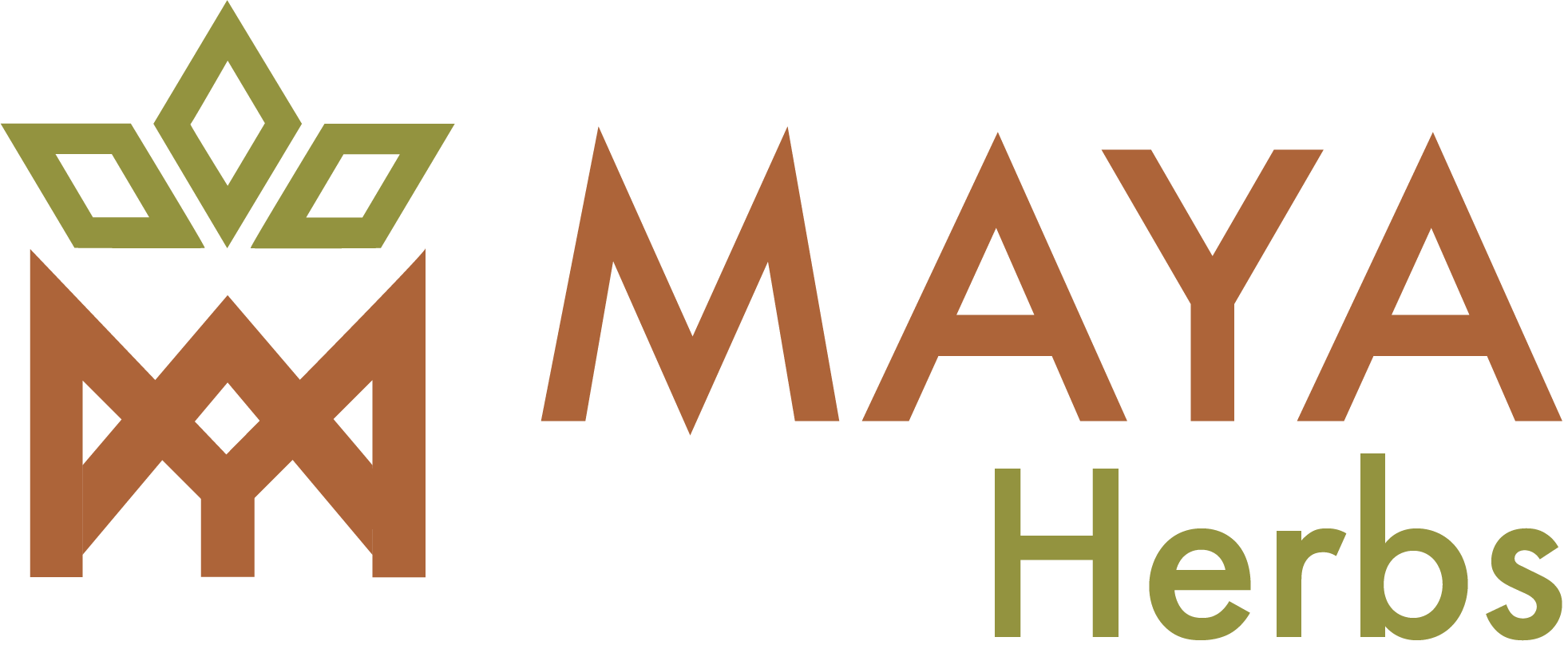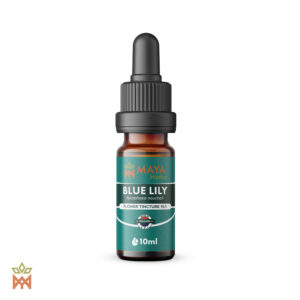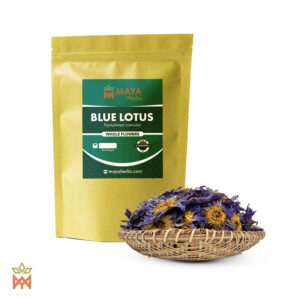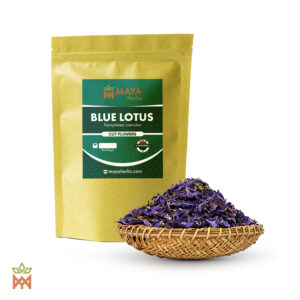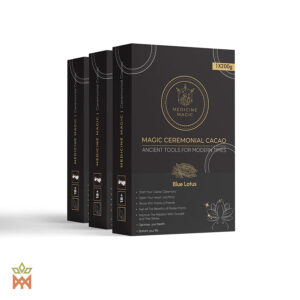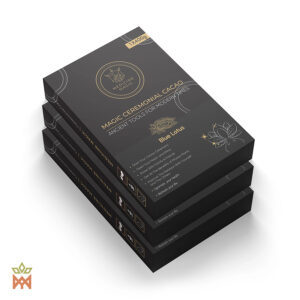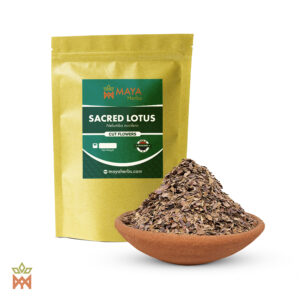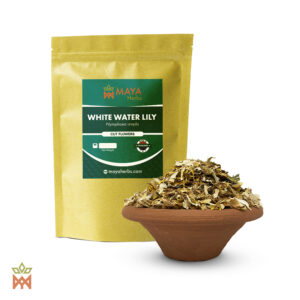Showing all 10 results
-
€8.01 – €110.08 Incl. VAT Select options
-
€18.01 – €70.05 Incl. VAT Select options
-
€8.01 – €180.00 Incl. VAT Select options
-
€12.00 – €82.67 Incl. VAT Select options
-
€7.87 – €100.80 Incl. VAT Select options
Showing all 10 results
What Is Blue Lotus?
Also known as the Blue water lily or by its scientific name, Nymphaea caerulea, Blue lotus is a subtly psychoactive plant famous for its worship and sacramental and recreational use by ancient Egyptians. It played an important role in this culture’s mythology, religious rituals, and social events, as well as a minor one in their medicine.
Blue lotus is aquatic, growing radiant floating flowers which typically reach 10–15 cm (4–6 in) in diameter. Their corolla boasts bluish/mauve petals whose color smoothly transitions to the pale yellow of the pistil (center of the flower). The flowers rise above the water surface during their blooming season in the summer months, opening up during daytime and closing at night.
Aside from being native to Egypt and the surrounding area (from which it has now mostly disappeared), Blue lotus is also endemic to north-eastern, eastern, and southern Africa, some parts of southwestern Asia, as well as to India and Thailand.
Nymphaea caerulea is actually considered to be just the Egyptian variety of the Nymphaea nouchali species, which is found in southern and eastern parts of Asia, and is also referred to as Blue lotus (or utpala in Sanskrit). The term “lotus” itself is also often applied to plants within several floral families that aren’t true lotuses, like N. caerulea and N. nouchali, which are actually water lilies.
Beyond its native range, Blue lotus has also been naturalized in several Pacific island countries, eastern Australia, southeastern Brazil, and Argentina. As the gorgeous ornamental plant that it is, Nymphaea caerulea, as well as other varieties of the Nymphaea nouchali species, are also widely cultivated by gardening enthusiasts around the world, where conditions permit.
Once enjoying a divine status in ancient Egypt, today Blue lotus is mostly used by plant medicine enthusiasts for the variety of subtle yet pleasurable psychophysical effects it can induce.
Blue Lotus Use Across Cultures & History
Blue lotus has an ancient history of ritualistic use and religious/spiritual symbolism in various cultures around the world. Most records of its use can be found in ancient Egyptian scripts, art, and archaeological findings.
Ancient Egyptian mythology regards the Blue lotus flower as the sacred womb that created their solar god Atum. This genesis myth recounts a world engulfed in darkness and water until a large Blue lotus appeared, opening up, birthing light, and introducing this proto-god to existence.
Similar legends can be found in the Far East, although the lotus in them is believed to most likely be the Asian Blue lotus, Nelumbo nucifera. For example, Guru Padmasambhava, one of the founders of Tibetan Buddhism, is believed to have miraculously appeared in the center of a lotus flower in the Milk Ocean when the rays of blessing light of the Buddha of Infinite Light shone on it.
The Buddha himself — Siddhartha Gautama — is said to have walked his first seven steps as a baby, each of the steps birthing a lotus flower on the ground. He is often portrayed sitting on an open lotus flower in a state of enlightenment, with all forms of Buddhism recognizing the lotus as a symbol of the highest spiritual ascendance.
The oldest sacred book of Hinduism, the Rig Veda, tells of the goddess Lakshmi, considered to be the mother of all beings. Lakshmi’s other name is Padma, which means “lotus,” and it is believed that the opening of a golden lotus birthed Brahma, Vishnu, and Shiva, the three major Hindu deities.
The open lotus flower was also regarded by the ancient Persians as a representation of the sun, serving as a symbol for the creator of life. The Phoenicians depicted the flower being carried to the heavens on wings, accompanied by the moon and stars.
Blue lotus blooms during the summer, opening its petals to receive the Sun’s light and closing them again when darkness engulfs the land. Due to this, the flower became a symbol of light (the Sun), origin, eternity, and resurrection for ancient Egyptians.
Depictions of the Blue lotus flower can be found engraved or sculpted on many Egyptian tombs, statues, and temples. The flower’s profound religious significance can be gleaned from the well-preserved sarcophagus of Tutankhamun, which held the young pharaoh’s mummy covered with blue lotus petals and included some in a garland found decorating his outer coffin. A statue portraying Tut’s head emerging from a blue lotus flower was also discovered in the tomb’s entrance corridor.
Some graphic representations also depict the use of Blue lotus in ancient Egyptian rituals. It’s assumed that the petals (potentially along with other psychotropic ingredients such as mandrake fruits and poppy) would be infused into wine, adding a touch of euphoria and aphrodisiac qualities to the beverage’s original effect.
This concoction would likely be consumed in social events such as the annual festival of intoxication dedicated to appeasing the warrior goddess Sekhmet, whose wrath, according to the myth, almost destroyed humanity… until she got mortally drunk. These occasions would evolve into extreme inebriation and, likely, massive orgies, which were, luckily, captured in detail in pictorial depictions. A Blue lotus decorating a woman’s head is thought to indicate her fertility and attractiveness.
Psychotropic effects of Blue lotus, or perhaps another flower of the Nymphaea genus, were also described by Homer in “Odyssey,” where lotuses are consumed by the Lotophagi, a mythical people living completely isolated on an island, existing in a state of dreamy forgetfulness and idleness due to constantly eating the plant.
Many centuries later, across the pond, the Mayan civilization appears to have also used a lotus flower in their religious rituals. Archaeological findings featuring lotus motifs associated with priests and deities indicate that this flower played an important role in the Mayan cosmology, just like it did for the ancient Egyptians. It’s also thought that both cultures used the plant for its purgative effects.
Blue Lotus Effects
The psychotropic effects of Blue lotus are generally considered to be enjoyable. However, depending on the dose and individual susceptibility, they can be extremely subtle. The effects start approximately 15-20 minutes after consuming a Blue lotus tea or alcohol infusion, and almost immediately after smoking or vaporizing the dried petals or Blue lotus resin.
Despite variations in individual experiences, users commonly report feelings of relaxation and euphoria not unlike having a minute dose of both a sedative and MDMA. Anecdotal experiences describe an anxiety-free, mildly altered state of consciousness resembling a waking dream, which may be accompanied by delicate and elusive closed-eyed visuals.
Many users report heightened sensory and emotional perception, with a deeper aesthetic appreciation and an increased desire for closeness and intimacy. The historical use of Blue lotus as an aphrodisiac finds validation in the flower’s ability to stimulate sexual desire and enhance potency and longevity, as reported by present-day users.
Additionally, some practitioners have benefitted from the anti-inflammatory and analgesic effects of Blue lotus when applied topically as an oil or salve, its soothing effects on gastrointestinal problems like dyspepsia and diarrhea, or its purported ability to lower blood sugar levels.
Finally, many also use the calming effects of Blue lotus for sleep regulation.
How Does Blue Lotus Work?
The two main active alkaloids in the Blue lotus flower, as well as in its rhizomes, are nuciferine and aporphine; the latter is metabolized into apomorphine once it’s in the body.
Both of these alkaloids elicit their effects by interacting with the dopaminergic system, which regulates motivation, attention, behavior, mood, pain, insulin levels, and gastrointestinal processes, to name a few of its many functions. Apomorphine is a non-selective D1/D2 dopamine agonist, while nuciferine has been found to have mixed effects on dopamine receptors.
Blue Lotus Benefits
Although all the clinical studies conducted so far on the therapeutic potential of Blue lotus alkaloids have been done only in vitro or on rodents, their results have, nevertheless, been promising.
Apomorphine was found to improve motor function and slow down neurodegeneration, making it useful in treating Parkinson’s and Alzheimer’s diseases. The compound can reportedly promote neural growth and alleviate depression and addictive behavior in rats; it’s also being looked into for its in vitro-demonstrated potential to suppress tumor cell invasion.
It’s believed that apomorphine’s antidepressant effects may be the result of its inhibitory action on dopamine metabolism. Stopping the breakdown of this neurotransmitter keeps more of it bioavailable and likely accounts for much of the psychoactive effects of consuming Blue lotus. Finally, apomorphine has been shown to be effective in treating erectile dysfunction.
Nuciferine was reported to have several potential medicinal benefits: it may exacerbate the analgesic effects of morphine, relieve inflammation, and, potentially, help treat a range of obesity-related diseases. Interestingly, the alkaloid has also shown some potential as a treatment for erectile dysfunction and premature ejaculation.
Other compounds isolated from Blue lotus flowers were found to possess antioxidant properties, meaning that might help protect the nervous system from degradation.
Blue Lotus Side Effects & Precautions
Consuming dried Blue lotus petals is generally not associated with dependency-forming or any serious adverse effects in healthy individuals. Users have reported that the effects actually blend harmoniously with other recreational substances like marijuana, alcohol, and even psychedelics.
Some of the commonly reported side effects resulting from high doses of Blue lotus include hot flashes, jittery sensations, and an elevated heart rate. When taken along with pharmaceutical painkillers, nausea, dizziness, or disorientation may occur.
A recent case study review described several patients admitted to the ER due to acute intoxication attributed to Blue lotus. The patients exhibited symptoms including altered mental status, anxiety, high heart rate, and agitation. It’s unclear, however, whether these symptoms are actually effects of nuciferine or apomorphine as most of the cases involve “Blue lotus vape juice,” which, as an unregulated product, doesn’t necessarily have to be real Blue lotus extract.
All that said, medically speaking, two groups in the population may truly be more vulnerable to Blue lotus risks. As its alkaloids are known to interact with dopamine and blood sugar levels, anyone with abnormal or naturally or chemically altered levels of dopamine or glucose should exercise caution when consuming this plant.
How to Take Blue Lotus
Blue lotus is typically ingested by drinking tea or an infusion made from the flower or its extract or by smoking/vaporizing its dried petals.
Blue Lotus Tea
To make a Blue lotus tea, the dried petals, powder, resin, or tincture can be steeped in hot water and drunk. However, as the alkaloids in the raw plant matter are not water soluble, making a Blue lotus tea from dried petals might not be the most optimal way to feel the plant’s effects.
Blue Lotus Infusion
Perhaps the best way to enjoy Blue lotus would be to do as the ancient Egyptians did and add its flowers or petals to wine or your preferred alcoholic beverage. After a few hours to a few days, with occasional swirling, a synergy of effects can be created due to the chemical reactions of the alkaloids and the ethanol in the liquid.
Extending the duration of this infusion process may intensify the drink and make it more bitter, so adding a sweetener like honey or using a sweet drink to begin with is recommended.
Smoking Blue Lotus
Dried Blue lotus petals can be smoked or the Blue lotus resin extract vaporized for more immediate effects. Blue lotus petals are often added to various herbal smoking mixes for their aromatic and soothing properties.
Blue Lotus Topical Oils and Salves
To craft a Blue lotus aromatic oil infusion, simply add your preferred quantity of dried Blue lotus petals into a blend of carrier oils, then allow it to steep for 2-6 weeks with daily swirling. Afterward, strain out the plant material, and you can use the resulting oil as a pain-relieving massage oil or melt beeswax into the oil to produce a soothing salve.
Dosages
Like cannabis, there are no particular dosage guidelines on consuming Blue lotus; with a practically non-existent risk of overdose or any serious or lasting side effects, anyone interested in experiencing this sacred plant’s soothing and activating qualities may freely experiment with dosages to find their optimal effect level.
Here are some general guidelines:
- Blue lotus dried flower tea/infusion: As a rule of thumb, a dosage between 3 and 10 grams of flower per person per serving should be sufficient when brewing a Blue lotus tea or making an alcohol infusion.
- Blue lotus dried petal smoking: If adding the petals to a smoking blend or smoking them on their own, it’s a stretch to consume even a single gram, so… smoke away!
- Blue lotus resin extract: It can be rolled into two or three tiny balls and either added to a beverage or to a smoking mix, or vaporized using a vaporizer that functions with resin.
- Blue lotus tincture: Between six and ten drops can be added to a beverage and drunk up to two times per day.
Blue Lotus Legality
Although a rare few countries have preemptively and with insufficient scrutiny banned this plant due to a recent proliferation of a variety of synthetic “smokable herbal incense” products and vape juices claiming to be derived from Blue lotus, Nymphaea caerulea is generally legal throughout the world.
Where to Buy Blue Lotus?
Here at Maya Ethnobotanicals, we offer a range of traditional medicinal plants which have been used by indigenous peoples for a variety of purposes since ancient times.
Our products are organically grown, sustainably harvested, and sourced through fair trade, and we sell them with the intention to promote ethnobotanical enthusiasm throughout the world.
We do not advocate for the use of any of our products in illegal ways, nor do we ship any of our botanical samples to countries where they are illegal. We advise our customers to inform themselves thoroughly about their local regulations before placing an order.
If you’re looking for Blue lotus for sale, you may purchase it in a variety of forms from our webshop:
